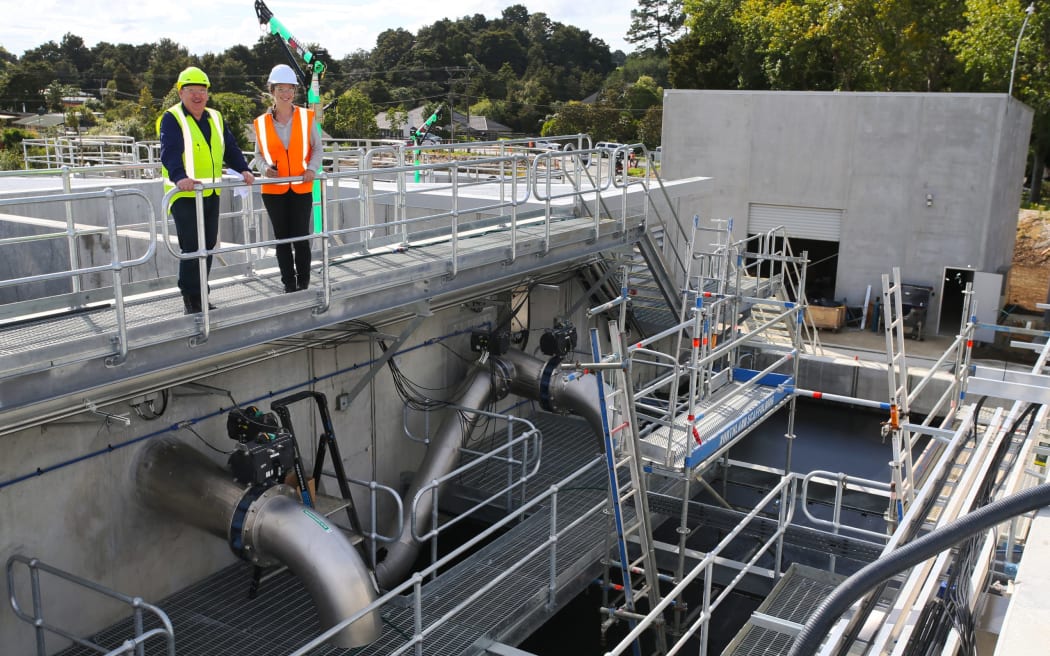Fluoride will likely soon be added to thousands of Northlanders’ drinking water – as the government moves to impose the controversial additive’s inclusion in council water supplies.
Fluoride to be added to Whangarei’s drinking water treatment plant in Whau Valley. Photo: Northern Advocate / Tania Whyte via LDR
Compulsory fluoridation – at a cost of more than $3 million – for Whangarei, Bream Bay, Kaitaia and Kerikeri council drinking water supplies is moving closer.
Ministry of Health Director-General of Health Dr Ashley Bloomfield late last year wrote to Whangarei District Council (WDC) and Far North District Council (FNDC), ahead of likely issuing a “direction to fluoridate”.
WDC acting infrastructure manager Andrew Venmore said that letter indicated Bloomfield would consider issuing the direction to fluoridate from the middle of this year.
Bloomfield wrote to WDC again on 3 May, asking how the council could speed up its efforts to fluoridate, after it initially told Bloomfield that would take three years to achieve. His correspondence also included reasons why fluoridation was to be introduced locally.
The Ministry of Health move applies to all Northland council reticulated community water systems supplying 500 or more people. There are six schemes that fit that size in the North.
None of Northland’s 17 reticulated council water supplies are fluoridated.
Councils directed to fluoridate must do so and do not need to carry out any public consultation.
Fluoridating Whangarei and Bream Bay drinking water will cost WDC $2.9m. This figure was in a public WDC council briefing meeting agenda last week which included Bloomfield’s 3 May letter, with attachment.
Local Democracy Reporting Northland asked for FNDC’s implementation cost figures. The council did not provide these.
Local Democracy Reporting Northland also asked FNDC for its letter from Bloomfield, equivalent to WDC’s 3 May correspondence. FNDC refused to provide this, saying it would be necessary to request this under the Local Government Official Information and Meetings Act 1987 (LGOIMA) which allows up to 20 working days to respond.
An official information request for the FNDC information was lodged on 18 May.
Councils have 40 working days, until June 29, to respond to Bloomfield’s latest request for strengthened cost and timeline information.
Government funding towards council fluoridation implementation is potentially available to local authorities that commence fluoridation this year.
Kaipara District Council (KDC) received its late-last-year fluoridation letter from Blomfield on 16 December.
Anin Nama, KDC acting general manager infrastructure services, said it had not received follow-up May correspondence. His council would seek to comply if the fluoridation directive was mandatory.
KDC’s Dargaville and Maungaturoto schemes both supply more than 500 people.
The government brought in the Health (Fluoridation of Drinking Water) Amendment Act 2021 in November. It gives the Director General of Health the power to direct a local authority to add fluoride to its drinking water supply.
Bloomfield said data showed about 57 percent of Whangarei adults had one or more teeth removed in their lifetime – due to decay, an abscess, infection or gum disease – compared with the 46 percent national average.
“Overall, a person living in the Whangarei District Council area is likely to have significantly poorer oral health outcomes than the average person in New Zealand,” Bloomfield said.
“The data shows there are significant opportunities for improvement. There are inequitable oral health outcomes between Maori and non-Maori,” he said.
Bloomfield said fluoridating Whangarei and Bream Bay drinking water – at a rate of .7-1mg/litre – would significantly reduce the prevalence and severity of dental decay. Fluoridation at these levels was considered safe and effective.
Local Democracy Reporting Northland has been unable to get the equivalent information for FNDC.
Bloomfield’s move comes as decision-making on whether fluoride is added to drinking water shifts away from councils to district health boards, which from 1 July will disappear as two new national health authorities come into being.
That has long been expected to centralise further with the Ministry of Health likely to take over local fluoridation decisions and a clear intention to add fluoride to councils’ drinking water.
Northland has one of New Zealand’s lowest rates of council reticulated drinking water.
Just three per cent of its about 180 marae get their drinking water in this way.
Only 27 percent of Kaipara’s people get their drinking water via reticulation, this figure lifting to 50 percent when combined across WDC and FNDC.
These figures compare with 85 percent of people nationally.
Local Democracy Reporting is Public Interest Journalism funded through NZ On Air
*Original article online at https://www.rnz.co.nz/news/ldr/467404/likely-government-fluoridation-decree-for-northland-councils-pending

